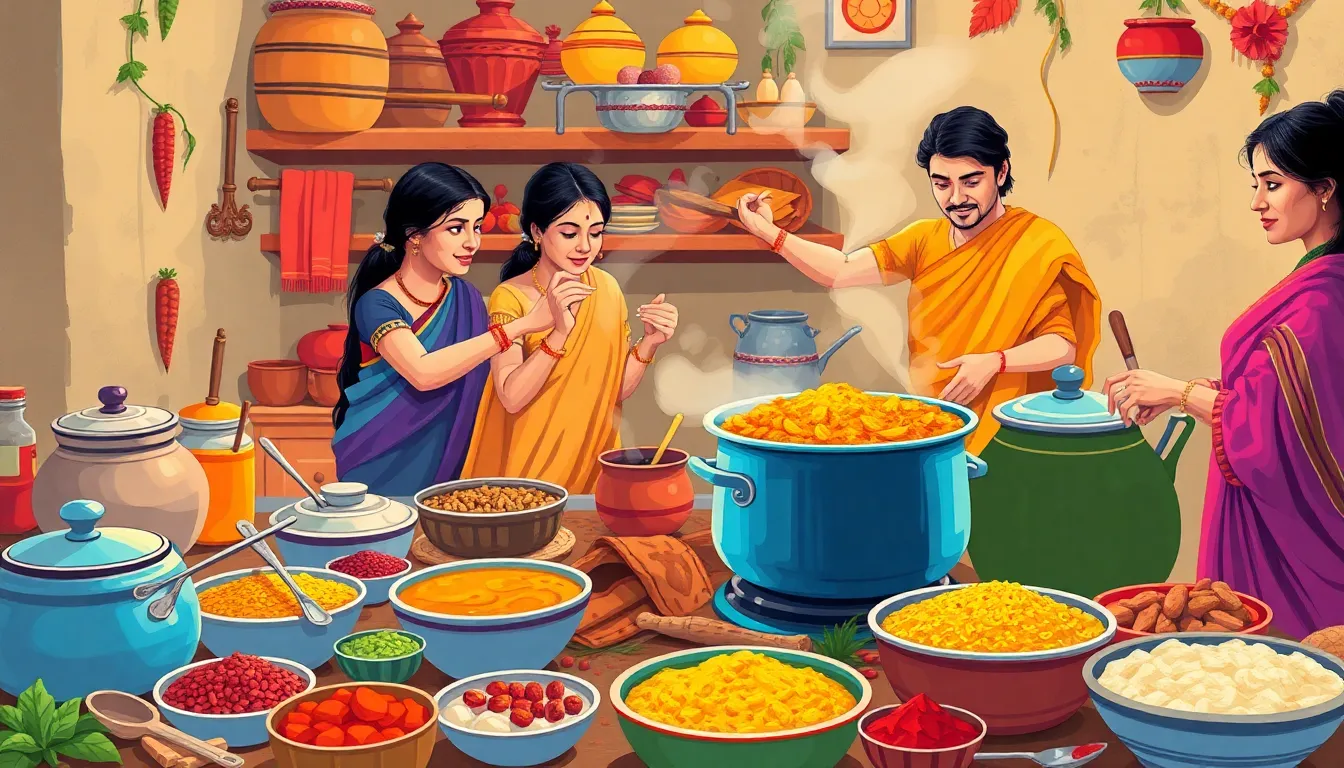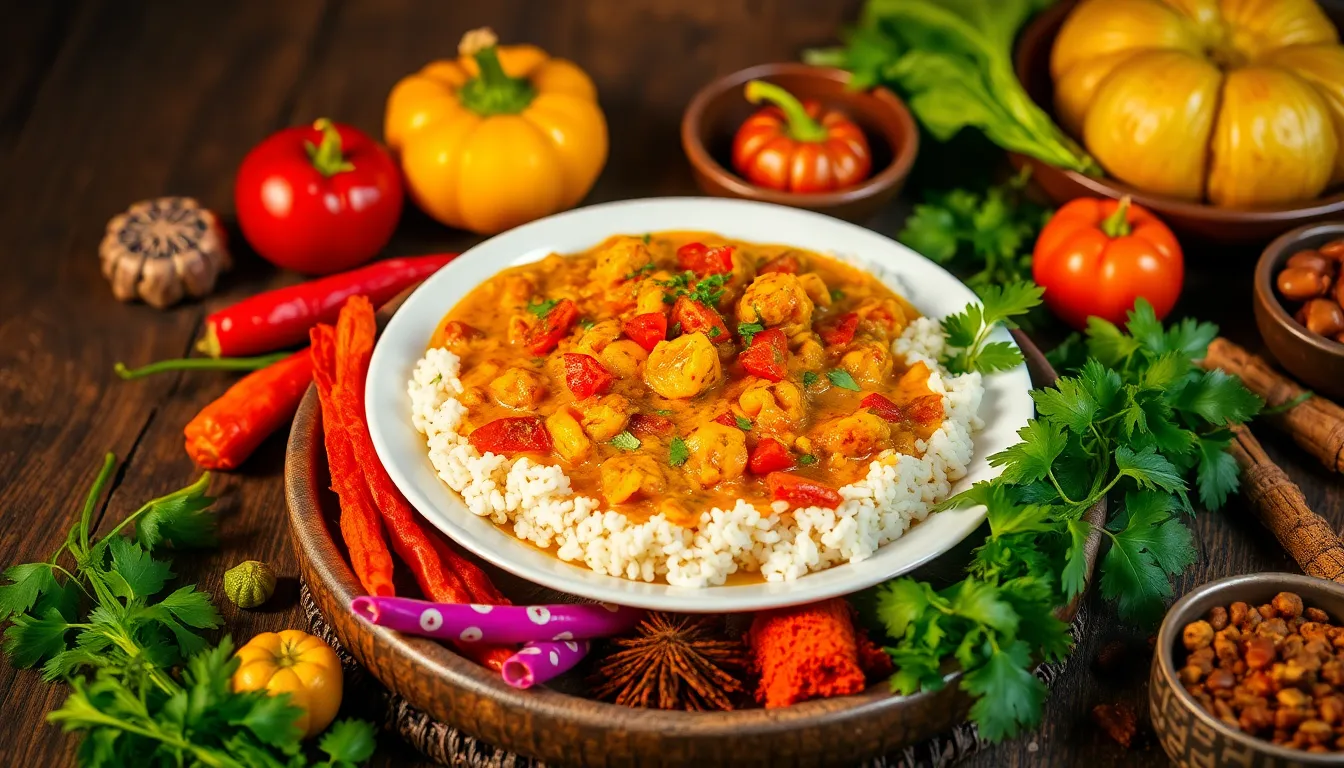In the bustling world of culinary delights, few dishes capture the essence of tradition and flavor quite like jharaahar. This lesser-known gem from the heart of Indian cuisine is more than just a meal; it’s an experience that tantalizes the taste buds and warms the soul. Imagine a dish so rich in history and flavor that it could make even your grandmother’s secret recipe feel like yesterday’s news.
Jharaahar isn’t just food; it’s a celebration of culture, spices, and the art of cooking. With each bite, you’ll find yourself transported to a vibrant kitchen filled with laughter, stories, and perhaps a few friendly kitchen mishaps. So, if you’re ready to spice up your dinner table and impress your friends, buckle up! This journey into the world of jharaahar promises to be as delicious as it is unforgettable.
Table of Contents
ToggleOverview of Jharaahar
Jharaahar features a unique combination of flavors and textures, showcasing the diversity of Indian cuisine. Originating from specific regions, this dish highlights local ingredients and traditional cooking methods. Spices play a vital role in the preparation, as they enhance the taste and aroma significantly.
The dish typically includes lentils or grains combined with vegetables, creating a nutritious meal. In many households, jharaahar represents more than just food; it embodies cultural heritage and family traditions. Festivals often see this dish served, bringing communities together to enjoy its rich flavors.
Cooking jharaahar requires skill and patience, as each step contributes to the final product’s essence. Certain techniques, such as slow cooking, allow the spices to meld perfectly, resulting in a harmonious blend. Many recipes incorporate seasonal vegetables, ensuring a fresh and vibrant dish throughout the year.
Serving jharaahar invites creativity, with options for garnishing or pairing with various accompaniments. Typically, it pairs well with yogurt or pickles, enhancing the overall dining experience. Sharing jharaahar brings joy, enabling people to bond over shared experiences and flavors.
Jharaahar stands out due to its adaptability, appealing to diverse palates while maintaining its roots in tradition. Enjoying this dish offers a taste of history, culture, and community, making each meal a memorable occasion. Exploring jharaahar provides culinary enthusiasts an opportunity to deepen their appreciation for Indian gastronomy.
Historical Significance of Jharaahar

Jharaahar holds a rich historical narrative within Indian cuisine, embodying traditions that span generations. This dish reflects the cultural significance of regional ingredients and cooking methods.
Cultural Context
The preparation of jharaahar often occurs during festive occasions, symbolizing community and togetherness. Families gather to share time-honored recipes, passing down cooking techniques through generations. Spices play a critical role in this dish, enhancing flavors and representing local agricultural practices. Special occasions, such as weddings or harvest festivals, frequently feature jharaahar, underscoring its role in celebrating heritage. Celebrating these moments with this dish fosters connections among family and friends, reinforcing cultural identity.
Evolution Over Time
Jharaahar has evolved over centuries, adapting to changing tastes and availability of ingredients. Historical documentation reveals its presence in ancient texts, showcasing its longstanding importance. As regional variations developed, unique interpretations emerged based on local preferences. Innovations in cooking methods contributed to its modern form, introducing new textures and flavors. While jharaahar maintains its traditional roots, it incorporates contemporary elements that reflect current culinary trends. This evolution highlights its relevance in today’s dining experiences, bridging the gap between past and present.
Features of Jharaahar
Jharaahar boasts several distinct features that make it a beloved dish within Indian cuisine. It stands out through its vibrant flavors, rich textures, and cultural significance.
Unique Characteristics
Jharaahar embodies a blend of spices that contributes to its aromatic profile. Lentils or grains become the base, complemented by seasonal vegetables that add freshness and color. Flavorful spices, such as cumin, coriander, and turmeric, enhance the overall taste. Each preparation reflects regional influences, showcasing the uniqueness of local ingredients. The dish often varies in texture, offering a delightful contrast between creamy and chunky components. Family traditions play a role in its preparation, resulting in recipes passed down through generations. Celebrated during festivals, jharaahar fosters a sense of community, bringing people together to share its warmth and richness.
Comparison with Other Forms
Jharaahar differentiates itself from other traditional Indian dishes through its customization potential. While many dishes focus on heavy proteins or intricate preparations, jharaahar emphasizes simplicity and balance. Its adaptability allows it to cater to both vegetarian and vegan preferences, setting it apart from meat-centric meals. The dish provides a hearty alternative to items like biryani or curries, often serving as a comforting staple. Unlike quick roadside snacks, jharaahar invites time for preparation, enhancing the cooking experience and flavor melding. Its celebration of lentils or grains creates an approachable yet satisfying meal, suitable for various occasions. Families frequently enjoy jharaahar, further solidifying its status as a cherished culinary tradition.
Applications of Jharaahar
Jharaahar finds its place in various fields, showcasing its significance beyond mere culinary enjoyment.
In Art and Literature
Artists and writers often draw inspiration from jharaahar. The dish represents cultural narratives, becoming a symbol of tradition within visual art and storytelling. Poets capture its vibrant colors and aromatic essence, illustrating how jharaahar embodies communal gatherings and celebratory moments. Within literature, narratives explore the connections between food, identity, and familial bonds. Ultimately, jharaahar’s representation in art and literature elevates its status, transforming the dish into a powerful cultural artifact that resonates with shared experiences.
In Modern Practices
Contemporary culinary enthusiasts embrace jharaahar, adapting it for modern lifestyles. Home cooks experiment with both traditional and innovative recipes, making the dish accessible to a wider audience. Many incorporate local produce and sustainable ingredients, reflecting current dining trends. Restaurants highlight jharaahar on their menus, often presenting it in visually appealing ways to attract patrons. Social media influencers promote jharaahar, sharing their unique spins and fostering a community of food lovers. This modern resurgence emphasizes jharaahar’s versatility and relevance in today’s culinary landscape.
Jharaahar stands as a testament to the rich tapestry of Indian cuisine. Its unique blend of flavors and cultural significance makes it a dish worth exploring. By embracing jharaahar, culinary enthusiasts not only discover a delightful meal but also connect with the traditions and stories that shape it.
The dish’s adaptability and vibrant essence invite creativity in the kitchen, allowing cooks to experiment while honoring age-old practices. As jharaahar continues to evolve, it remains a cherished symbol of community and celebration, bridging generations and inviting all to partake in its delicious journey.




